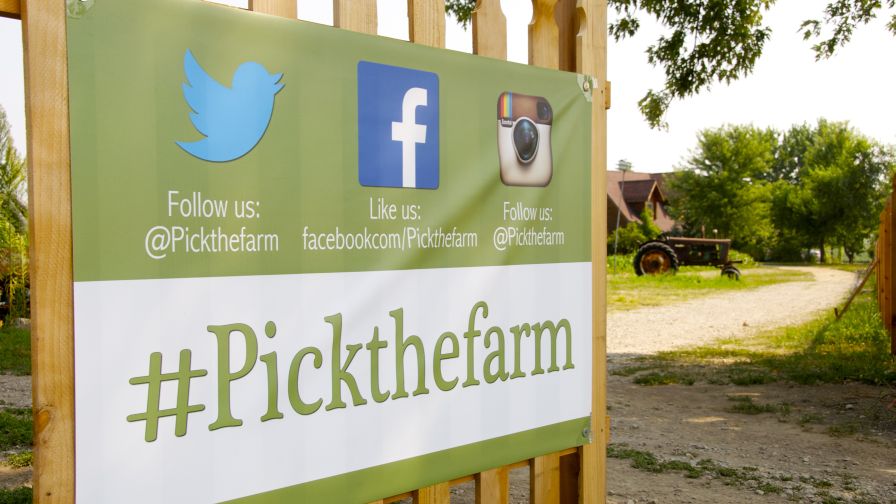How to Create Social Media Magic with Your Small Farm
Gone are the days when social media could be an afterthought for a small farmer. If you have any direct contact with your consumers, social media needs to be an important step in your outreach, says Anthony Ndoca, a young grower turned consultant.
“The ones that are marketing well are making it,” he says. “A good quality product is great but a good quality product doesn’t do anything for you if you’re not selling it and people see it.”
Anthony Ndoca and his sister, Lexie, bought their grandfather’s farm in Illinois a few years ago, and from there they went about trying to build a strong online presence to boost their business. They did more than boost their business.
“We doubled our revenue in one year just by hiring someone,” he says.
But, in order to be as successful as Ndoca and his sister were, it’s vital to take social media seriously. Ndoca offers some tips and takeaways in order to help you use social media to boost your business.
- Get on Facebook, If You’re Not
Ndoca says your orchard or farm must have a Facebook page, especially if you have any direct contact with people purchasing your produce. A website is good, too, but what makes Facebook a win is your reach is far greater with posts, shares, and likes. There is some cost with getting added exposure (called boosting) to your posts, but that is nominal.
“If there are farmers out there that don’t have an online presence, and the first thing they’re thinking is that they want to increase sales, the No. 1 thing they need to be doing is creating and building an online presence,” he says. “You can reach hundreds of thousands of people for a couple hundred bucks. It is very simple to reach people. It’s free to do most of this,” he adds.
Ndoca says he’s a bit shocked to go to conferences, meet growers, and then try to look up some basic contact information online, and he can’t find them. One would argue that in that instance, a business card or a phone book might suffice.
But, that’s not how your consumers operate. And it’s a safe assumption that if people are searching for apple picking or corn mazes online, and your farm or operation lacks a website — but more importantly a Facebook page — they’re likely going to someone else’s farm who has a strong online presence.
“People wake up in the morning and they look on their phones and they say ‘what are we doing with our kids today?’” he says. “They see a post from the farm about picking strawberries, and guess what, they’re going strawberry picking.”
LinkedIn, Instagram, and Twitter are also good to participate in. LinkedIn is especially good for a farm who might be advertising employment opportunities. Google+ is another option. While profiles may not be an important part of social activity anymore, Ndoca says he got a noticeable boost with Google search results, which can help you link up with consumers looking for pick-your-own farms.
“By posting about strawberries and strawberry picking on Google+, that would push us up to the top of the list for people searching for strawberry picking.”
- Manage Your Accounts Properly
While having an online presence is a step in the right direction, Ndoca says your operation’s online presence should be managed and managed well. Why? Because the modern-day consumer isn’t going to pick up the phone and call your farm. They’re asking for operation hours (if you don’t post them) and what varieties are available (if you don’t mention them).
“They are already on their phone or computer and they want an answer right now, and that’s the best way to do it,” he says. “These things cannot stay stagnant. Someone needs to be managing them.”
Ndoca says a farm could have a family member manage the accounts, but he strongly encourages small farmers to seek out someone to manage the account regularly.
“What I see in ag now a lot of these farmers say ‘Oh, my granddaughter or my grandson does it,’” he says. “They’re perfectly capable of doing a post here and there, but my recommendations would be to pay someone to do it. Unless they’re held accountable or you can hold them accountable, they’re not keeping up with it. You need someone who can answer questions about what’s [happening] on the farm on the other end.”
Ndoca says his sister always made it a point to tell visitors to his family’s farm and farm market about the social media accounts.
“When someone would ask a question about something in the store she would say ‘you know what, we post that on our FB page, or we post that on Instagram,’” Ndoca notes. “Every single customer you have is the best source for getting followers for your online profile. You need to make sure when people come to your farm, every single one of them is following you on Instagram, or Twitter, or Google+.”
While adding someone to run your social media accounts may mean an added expense, Ndoca says farmers should recognize the return on investment, much like his family saw. This is akin to adding a new piece of equipment or a new variety.
“For $10,000 a year or $5,000 a year you could very easily hire someone to come out once a week, take some photos once a month, and make a bunch of great posts,” he says. “There’s not a single farmer out there that if I was managing his online profile, he wouldn’t recognize the return on investment.”

This sign at Ndoca’s farm higlights all the social media accounts the farm has. (Photo: Molly Nolan)
- Be Consistent in Your Posts
Consistency goes hand-in-hand with managing social media accounts properly.
“If I can stress anything, No. 1, you have to have a website and Facebook profile,” he says. “No. 2, if you have those things, you have to absolutely, 100% without question, have to have above-average photography.”
Ndoca says every piece of information you’re handing out to consumers should have your social media contact information on it. And, everything that is created, whether it’s on Facebook or Instagram or even a sign for the farm, should all look similar.
“Every bit of information you’re handing out or giving to people should include your email and website,” he says. “It should be on every bit of everything you hand out, so people know and can follow your farm,” he says. “Consistency is so important,” he adds.
Ndoca says his farm got compliments on the photography on his social media accounts and the website.

This Facebook post highlighted the ever-popular cider doughnuts available at Ndoca’s farm.
(Photo: Molly Nolan)
“Just hearing that, alone, made it worthwhile,” he says.
Good photography is a start. Ndoca says the captions that go with the photo help convey the message, too.
“There is an art to this. I don’t want to scare anyone off, but you’re not just walking out in the field, snapping a photo of an apple and posting it right away. It needs to look nice, there needs to some well-written copy or a well-written caption that is getting a point across that people want to see,” he says. “In this day and age, it is not just about sending a photo. It’s about sending a photo, getting likes on it, people sharing it, having events so more people are sharing it, and more people come to your events. You can make it look worse if you have spelling errors in your post,” he says.
- Don’t Overlook the Little Things
While Ndoca says social media is an important part of running a successful modern-day farm market, he also says the little things are what keeps customers coming back. Whether that’s notifying customers of all the crops you grow and roughly when they’ll be available, or even when you add something new to the farm – like apple cider doughnuts – details are important
“They don’t tell you why they’re not coming back; you just hope they’re following you on FB or Instagram and you hope they notice you now have cider doughnuts,” he says.” You need to be making sure they’re following you on those online profiles and coming back.”
Ndoca also used each opportunity he could to get in front of his customers – and their friends – to point out when crops are coming.
“Come June 1, when we opened for strawberry picking, come hell or high water, we had to make sure people knew that in July they could come pick raspberries and gooseberries and currants, and in August they could come pick peaches and blackberries,” he says. “We wanted to reach those strawberry customers just on the off chance they were looking to pick gooseberries or currants. We didn’t wait to advertise apple picking till September. That way, they’re not planning to pick apples elsewhere.”










